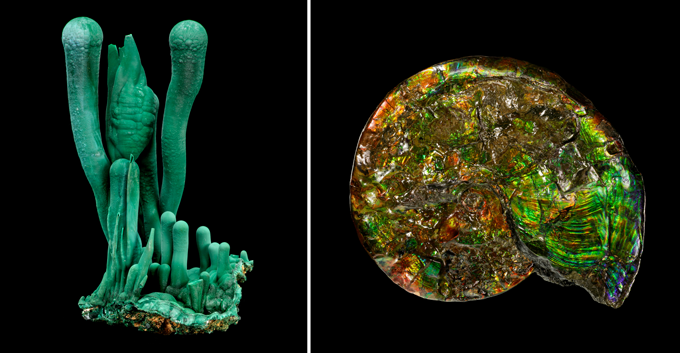Earth’s rock collection hints at how to search for life elsewhere
A census of the ‘mineral kingdom’ may reveal groups of rocks explainable only by life

Calcite can form in 17 different ways. That’s more than almost any other mineral. This crystal formed in a cave, where changing water levels gave it a distinctive shape.
Rob Lavinsky/ARKENSTONE
By Asa Stahl
If you want to touch a piece of Earth’s ancient past, grab a rock. Some may have formed fairly recently. Others are billions of years old. Both can tell us about our planet’s history. Now, for the first time, scientists have cataloged the origin stories of every known mineral. By tracing patterns in how these minerals form, scientists hope to learn what our planet used to be like.
They’ve already made a few new discoveries. Some of those origin stories indicate Earth might have hosted life earlier than previously thought. Mineral-origin stories also reveal that water has been the most important ingredient in geology. And in the future, researchers may even use the new catalog to help search for life on other planets.
“This is just going to be an explosion,” says Robert Hazen. He works at the Carnegie Institution for Science in Washington, D.C. “You can ask a thousand questions now that we couldn’t have answered before,” says this mineralogist and astrobiologist.
For more than 100 years, scientists have defined minerals by the chemical elements they contain and how the atoms of those elements are arranged. But that can leave out other important differences.
For example, all diamonds are crystals having the same pattern of carbon atoms. But three different diamonds might have different stories, Hazen says. One could have formed 5 billion years ago in a distant star. Another may have been born in a meteorite impact. And a third could have been baked deep below the Earth’s crust.
So Hazen and his colleagues came up with a new way to classify minerals. Instead of asking what they’re made of, they now ask: “How was this made?” That means thinking about minerals as things that evolve out of the history of life, Earth and the solar system.
Hazen’s team combed through decades of research on all 5,569 known minerals. As they went, they kept track of how each one gets made. There’s a lot of variety. Some minerals were born in the space between stars. Others formed in bat poop. In total, the team defined 57 main ways that the “mineral kingdom” forms. They shared their results in a pair of studies in American Mineralogist July 1.
Every mineral tells a story
Patterns were easy to spot once Hazen’s team had the catalog. One of the biggest was how fast minerals probably evolved — and what that says about the origins of life.
Earth is some 4.5 billion years old. The oldest signs of life appeared about 3.5 billion years ago. But Hazen’s team finds that most geologic environments where the earliest life may have arisen could have been around long before that — as early as 4.3 billion years ago. That means life may have formed almost as soon as Earth did. Or, at the very least, life likely had more time to emerge than most scientists had thought.
For rocky worlds, that could show “the potential for life is baked in at the very beginning of a planet,” says Zachary Adam. He’s a paleobiologist at the University of Wisconsin-Madison who did not take part in the new study.
But when Earth became ripe for life isn’t all that clear, says Frances Westall. She’s a geobiologist at the Center for Molecular Biophysics in Orléans, France. She, too, did not take part in the new work. The exact timing that the team predicted depends on “iffy” computer models, Westall says. She argues that they use data and math to study things that can be difficult to observe. She thinks that the scientists need more evidence before they can be sure. But, she adds of the study, “the principle is fantastic.”

The new results, Hazen say, also show “water is just incredibly important.” At least on Earth, roughly 80 percent of the known types of minerals need water to form.
This means that if researchers see water on a planet like Mars, they can expect it may have a wide range of minerals. Flipping this idea around may be even more useful. Scientists could first identify what minerals are on the Red Planet. Then they could use the catalog to work out what Mars’ environment was like in the past. A group of minerals, for example, might be explained only by the presence of water or life.
Right now, scientists do this detective work on just a few minerals at a time. But to make the most of samples that will be collected on other planets, Adam says, scientists need a broader approach — like the new study’s framework.
And that’s just the beginning. What makes this catalog so valuable is that it can be updated by every new generation of scientists, Adam says. “We can go back to it again and again and again for different kinds of questions.”
“We have a lot more we can do,” agrees Shaunna Morrison. She’s a mineralogist at the Carnegie Institution who helped make the catalog. “We’re just scratching the surface.”







